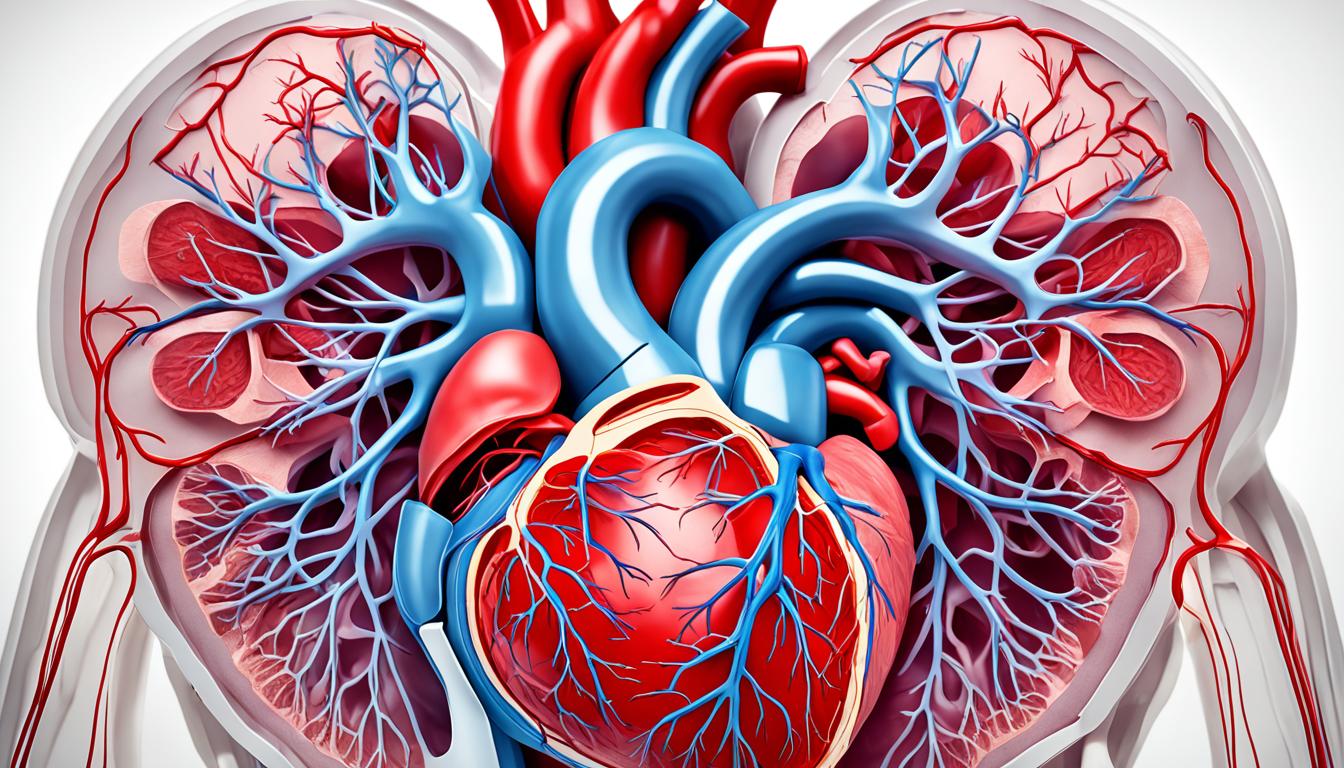Total Anomalous Pulmonary Venous Return (TAPVR) is a heart defect. It affects infants, turning their lips or skin blue. This happens when the veins bringing oxygen-rich blood miss their way to the heart. Instead, they join the wrong path, mixing good and bad blood. This mix doesn’t provide enough oxygen to the body. TAPVR has different forms, depending on where the veins misjoin. Some types have more challenged blood flow due to narrowed paths.
TAPVR is not common, making up a small percent of heart defects at only 0.7% to 1.5%. While how it starts isn’t entirely clear, it likely links to the heart not forming right before birth. Some genes and environmental things might also play a role in its development.
Key Takeaways:
- TAPVR is a cyanotic congenital heart defect that affects infants.
- The condition occurs when the pulmonary veins drain into the systemic venous circulation instead of the left atrium.
- TAPVR can be categorized into different types, including supracardiac, infracardiac, cardiac, or mixed.
- Obstructed TAPVR occurs when the pulmonary veins are narrowed, further compromising blood flow.
- TAPVR is a relatively rare condition, accounting for approximately 0.7% to 1.5% of all congenital heart defects.
Symptoms and Diagnosis of TAPVR
TAPVR can show different symptoms based on the blockage’s degree and the person’s age. In babies with a blocked TAPVR, signs often appear at birth. These symptoms include a bluish skin color due to lack of oxygen, signs of shock, severe shortness of breath, and trouble waking up. Recognizing these signs early can lead to the right treatment fast.
In cases where TAPVR is not blocked, symptoms might show after the baby is a month old. They could include light blue skin, feeding troubles, and breathing difficulties. These signs may not seem serious, leading them to be missed or confused with other baby issues. Parents and doctors must stay alert and get a checkup if they notice any troubling symptoms.
To diagnose TAPVR, doctors often use echocardiography. This is a safe test that uses sound waves to look at the heart’s detailed pictures. It lets the doctor see how the blood vessels from the lungs attach to the heart. This test can confirm the diagnosis. Doctors might also use cardiac catheterization to check the problem’s severity.
Echocardiography for TAPVR Diagnosis
Echocardiography is key to diagnosing TAPVR. It shows how the pulmonary veins are not connected right. This helps doctors know the exact TAPVR type and how severe it is. Figuring this out helps with planning the best treatment.
A transducer placed on the chest during an echocardiogram sends sound waves through the heart. These waves turn into images that show the heart’s shape and how it’s working. This helps spot if the pulmonary veins are not linked as they should be in TAPVR.
Echocardiography is vital for a diagnosis since it’s safe, doesn’t need cutting the skin, and is accurate. Being able to see how the veins drain from the lungs is key to getting the diagnosis right. This starts the path to the right treatment plan.
| Symptoms of TAPVR | Diagnostic Techniques |
|---|---|
| Cyanosis | Echocardiography |
| Shortness of breath | Cardiac catheterization |
| Poor feeding | |
| Labored breathing |
Echocardiography is very accurate in diagnosing TAPVR early. This timely diagnosis is very important for the patient’s best outcome. It allows for starting the right treatment quickly.
Treatment Options for TAPVR
The treatment for TAPVR varies based on the subtype and how severe it is. Often, surgery is key to fix how the pulmonary veins drain and to restore normal blood flow. These surgeries aim to change the veins’ path to the left atrium, fix heart defects, and clear blockages in the veins.
Complications from TAPVR, like pulmonary vein stenosis, can happen. This refers to the pulmonary veins getting narrow, which might need surgery.
Stem cell therapy is a new area of interest for TAPVR. It uses stem cells to try to heal the heart’s damaged tissue. While it’s still in testing, stem cell therapy shows a lot of potential for making TAPVR outcomes better.
Doctors also focus on medical treatment for TAPVR. They keep a close eye on the patient and give medicines to manage symptoms and help the heart work better.

